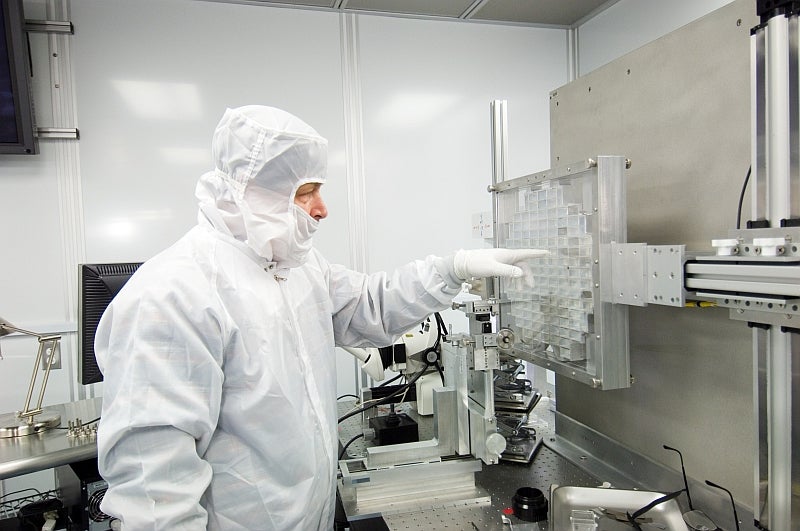Dust particles retrieved from space could provide clues about the origins of our solar system
Listen
Andrew Westphal analyzes a sample of dust particles brought back from a mission on the Stardust spacecraft. (Photo courtesy of Andrew Westphal/NASA)
Scientists think they’ve collected and identified seven space dust particles so small, a needle in a haystack doesn’t even begin to describe it.
But even with the tiny size, these interstellar travelers could hold the answers to big questions about the universe.
The announcement earlier this year that the specks had been identified is a story 15 years in the making, beginning with the 1999 launch of the unmanned Stardust spacecraft from Cape Canaveral. After a year of travel, Stardust arrived at its destination beyond the orbit of Mars, where its robotic arm extended a tennis racket-shaped collector unit into the interstellar dust stream.
“It just captured particles as it would if you were holding up a piece of fly paper and catching flies, by waving it through the air,” says Andrew Westphal, an astronomer at UC Berkeley.
It’s not quite as simple as that. For starters, the dust particles are moving at speeds approaching 12 miles per second. Something moving that fast hits something else, and there’s a good chance it vaporizes on impact.
So NASA developed a high-tech “aerogel” substance to coat the collector’s surface. It acts like a foam landing pad, slowing the particles down and preserving them.
After 200 days of exposure to the dust stream, the collector was hauled inside the spacecraft, where it was placed into a return capsule. Next stop: Utah.
“I was there with my family, actually, about 2 o’clock in the morning, we watched it come in in the middle of a blizzard, and it was kind of an amazing experience to see this,” says Westphal.
Safely back on Earth, his research team at UC Berkeley next had to try to pluck these little space dust particles out of the gel. There’s an emphasis here on the little.
“To put this in some perspective, they are so small about a trillion of them would fit into a teaspoon,” says Westphal.
That impossibly small size presented something of a problem. How do you parse through the gel to find and isolate the handful of particles researchers expected to find?
Westphal and his team at Berkeley had an idea. If they could use a microscope to zoom in and take images of the gel from different angles, then they could upload those photos to a public website.
The operation became known as ‘Stardust@Home,’ and eventually 30,000 volunteers logged on and scanned through more than a million images.
“I want to emphasize, this was not something we made up for public outreach or for PR,” says Westphal. “We did this because this was the only way we knew how to approach the problem.”
This group, some of whom spent hours and hours each day clicking through slides, came to be called Dusters. And two Dusters hit paydirt, discovering actual space dust in the gel. Five other particles were spotted in the lab, though some of these were only fragments leftover from the collision with the collector.
Each particle appears different under a microscope, with some containing the mineral olivine (better known as the gemstone peridot), as well as sulfur compounds.
It will take years to confirm their origins, but if proven, harnessing these specks could be a major breakthrough for astronomers interested in the interstellar medium.
“One goal in studying them is purely to understand them for their own sake, what they are and how they came to be that way,” says Bruce Draine, an astrophysicist at Princeton. “But these dust particles turn out to be very important players in the workings of a galaxy.”
Figuring out this dust, Draine says, its like solving one clue in the crossword puzzle of the universe. If scientists answer this, they get a little closer to answering other, harder questions. Big picture stuff, like how our solar system was formed.
“I kind of like to make the analogy to paleoanthropologists who go out to Africa and look for fossil hominids, our ancestors who lived 4.5 million years ago,” says Andrew Westphal.
“We are going back about a thousand times further in time to 4.5 billion years ago and looking at the kind of stuff that made up our solar system. So it really is about a search for our own origins.”
WHYY is your source for fact-based, in-depth journalism and information. As a nonprofit organization, we rely on financial support from readers like you. Please give today.



